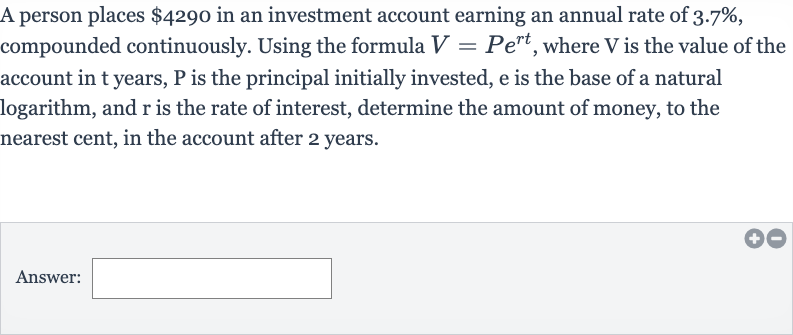AI tutor
Welcome to Bytelearn!
Let’s check out your problem:

A person places in an investment account earning an annual rate of , compounded continuously. Using the formula , where is the value of the account in years, is the principal initially invested, is the base of a natural logarithm, and is the rate of interest, determine the amount of money, to the nearest cent, in the account after years.Answer:
Full solution
Q. A person places in an investment account earning an annual rate of , compounded continuously. Using the formula , where is the value of the account in years, is the principal initially invested, is the base of a natural logarithm, and is the rate of interest, determine the amount of money, to the nearest cent, in the account after years.Answer:
- Identify Given Values: Identify the given values from the problem.Principal Rate of interest or (as a decimal)Time yearsWe will use the formula to find the value of the account after years.
- Convert to Decimal: Convert the percentage rate to a decimal.To convert a percentage to a decimal, divide by .
- Substitute into Formula: Substitute the values into the formula.
- Calculate Exponent: Calculate the exponent part of the formula.
- Calculate e Value: Calculate raised to the power of the exponent. (Use a calculator for this step)
- Multiply Principal: Multiply the principal by the result from the previous step.
- Find Account Value: Perform the multiplication to find the value of the account after years.
More problems from Compound interest
QuestionGet tutor help
QuestionGet tutor help
QuestionGet tutor help
QuestionGet tutor help
QuestionGet tutor help
